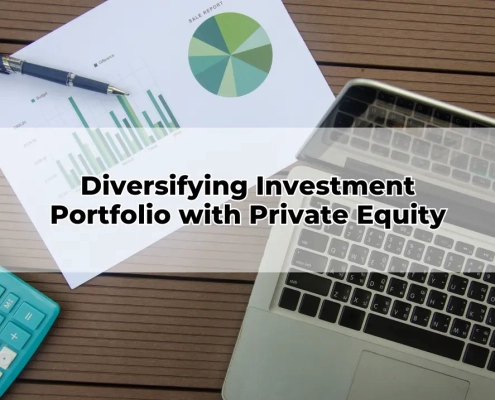
Diversifying Investment Portfolio with Private Equity
The age-old adage "don't put all your eggs in one basket" is no longer reserved for traditional equities and fixed income. In today's volatile financial environment, true diversification requires extending beyond public markets into the often…
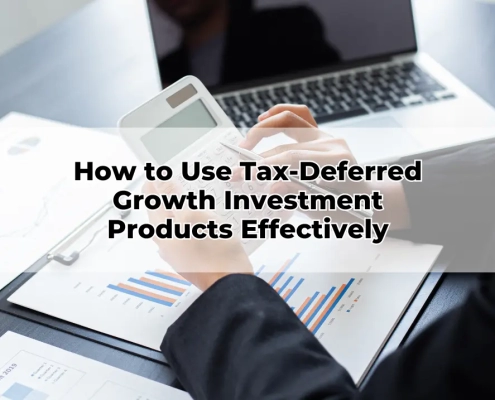
How to Use Tax-Deferred Growth Investment Products Effectively
Tax-deferred growth investment products allow earnings such as interest, dividends, and capital gains to accumulate without immediate tax liability. Instead, tax is paid only when the investment is withdrawn or matures. These instruments include…
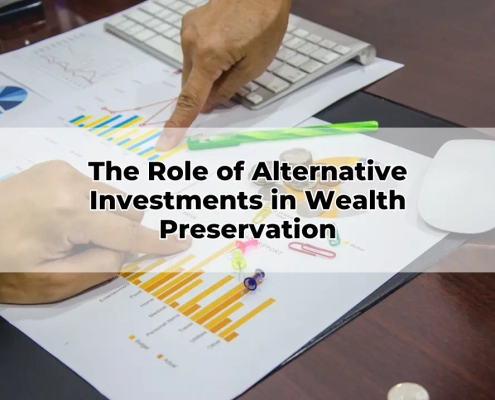
The Role of Alternative Investments in Wealth Preservation
Preserving wealth is not simply about safeguarding assets-it's about maintaining purchasing power, minimising risk exposure, and adapting to market shifts over the long term. In an era marked by global volatility, inflationary pressures, and…

Retirement Planning for Couples in Their 50s
Couples in their 50s face a pivotal decade in their financial lives. With retirement on the horizon, this is the time to consolidate gains, rectify past missteps, and refine strategies that ensure long-term financial independence. Unlike earlier…

How to Save for Retirement with a Regular Investment Plan
A regular investment plan is one of the most effective mechanisms to secure your financial future. In a landscape where longevity is increasing and government support may not suffice, the need for disciplined, long-term investing has never been…

SMSF Borrowing Rules and Requirements
Borrowing within a Self-Managed Superannuation Fund (SMSF) is not as straightforward as traditional lending. SMSF trustees must navigate a stringent framework set by the Australian Taxation Office (ATO) to ensure full compliance and…
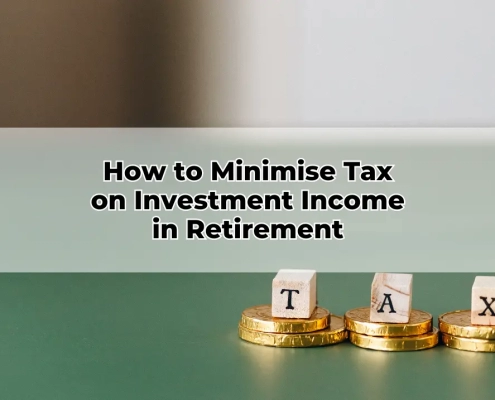
How to Minimise Tax on Investment Income in Retirement
Retirement should represent the culmination of a life’s hard work—not a financial burden due to poor tax planning. As a Toowoomba Financial Adviser, one of the most significant areas where retirees can maximise their income is through…

The Risks of Cryptocurrency in Your Investment Portfolio
The meteoric rise of cryptocurrency has caught the attention of everyday investors, seasoned financiers, and global institutions alike. Bitcoin, Ethereum, and a suite of altcoins have evolved from obscure digital concepts to mainstream assets…

How to Create a Balanced Investment Strategy with Limited Risk
In the ever-evolving world of investing, achieving sustainable growth while safeguarding capital is paramount. A balanced investment strategy is designed to deliver just that-equilibrium between capital appreciation and risk mitigation. It entails…

Why Your Superannuation Needs to Be Part of Your Estate Plan
Estate planning is often viewed through the narrow lens of wills and property transfers, but in Australia, one of the most significant components-superannuation-is frequently neglected. Superannuation does not automatically form part of your…

How to Choose the Right Investment for Your SMSF
Self-managed superannuation funds (SMSFs) offer an unparalleled level of control, but with this freedom comes the burden of complexity. Choosing the right investment for your SMSF is not a decision to be made lightly. It requires precision,…

How to Handle Inherited Wealth
Receiving an inheritance can be both a windfall and a weight. While it may represent a financial boost, it often arrives during a period of grief or emotional upheaval. This duality can cloud judgement and lead to hasty or misinformed financial…
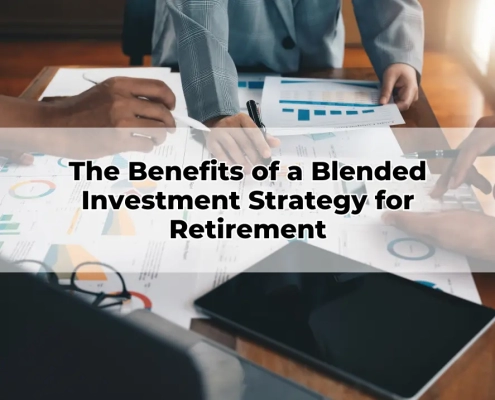
The Benefits of a Blended Investment Strategy for Retirement
In a world where longevity risk, inflation creep, and market unpredictability converge, retirees and pre-retirees must evolve their thinking. The traditional reliance on a single investment approach—be it purely growth-focused or fixed income—no…

Long-Term Care Insurance in Aged Care Planning
In Australia, aged care planning is evolving. With longer life expectancies and increasingly complex care needs, families are seeking robust financial strategies to manage future obligations. One instrument often overlooked is long-term care…

Financial Planning for Australians Going Through Divorce
Divorce is as much a financial recalibration as it is an emotional one. The dissolution of a marriage often dismantles years of financial co-dependence, forcing both parties to re-evaluate assets, liabilities, income, and future objectives.…

How to Use Superannuation Contributions to Maximise Tax Benefits
Superannuation is more than just a retirement savings vehicle - it's a potent mechanism for tax efficiency. With Australia's robust regulatory structure, individuals can leverage strategic super contributions to mitigate tax liabilities while…

Capital Gains Tax on Property
Capital Gains Tax (CGT) is an often-overlooked yet critically important consideration in the financial trajectory of any property investor in Australia. Whether it's your family home, an investment property, or land held within a Self-Managed…

What Investors Need to Know About Emerging Markets
Emerging markets refer to economies in transition from developing to developed status. These countries often experience rapid industrialisation, population growth, and economic reform, making them fertile ground for capital appreciation. Investors…

How to Use Investment Loans to Maximise Portfolio Returns
Utilising investment loans, or gearing, is a powerful financial strategy that can amplify portfolio returns when executed prudently. While the concept of borrowing to invest may seem counterintuitive to some, particularly those with a conservative…

The Future of ESG Investing
Environmental, Social and Governance (ESG) investing has evolved from a niche ethical concern into a formidable force shaping capital allocation across global markets. In Australia, the appetite for ESG investments is surging, driven by an informed…

How to Plan for Retirement While Paying Off Debt
Balancing the dual objectives of paying off debt while securing a prosperous retirement is no easy feat. Australians, particularly those nearing their retirement years, often find themselves burdened with lingering mortgages, personal loans,…

The Benefits of Building a Family Legacy with Trust Funds
Trust funds have evolved from being mere wealth preservation tools to becoming powerful instruments for legacy building. For families seeking to impart not only financial security but also long-lasting values to future generations, trust funds…

Why Financial Planning is Essential for First-Time Homebuyers
Purchasing your first home is a monumental milestone, often imbued with excitement, anxiety, and complexity. At the core of a successful transition from renter to homeowner lies strategic financial planning. Without a clear blueprint, first-time…

Strategies for Managing Tax When Selling Investment Property
Selling an investment property can trigger a cascade of tax considerations that may significantly impact your financial outcomes. Understanding these implications is paramount. In Australia, capital gains tax (CGT) typically applies when you…

How to Plan for the Cost of Elderly Care Using Superannuation
Australia's ageing population has brought the cost of elderly care into sharp focus. As life expectancy climbs and care needs grow, financial preparation is more crucial than ever. Elderly care expenses can rapidly erode retirement savings if…

The Role of Financial Advisers in Minimising Aged Care Costs
Australia's ageing population presents significant financial challenges. With the cost of residential aged care and home care packages steadily increasing, families are seeking strategic guidance. As a trusted Toowoomba Financial Adviser,…

How to Plan for Retirement if You’re Self-Employed
Self-employed Australians enjoy a distinct level of autonomy in their working lives, yet face a corresponding burden when it comes to planning for retirement. Without the automatic superannuation contributions enjoyed by employees, the task…
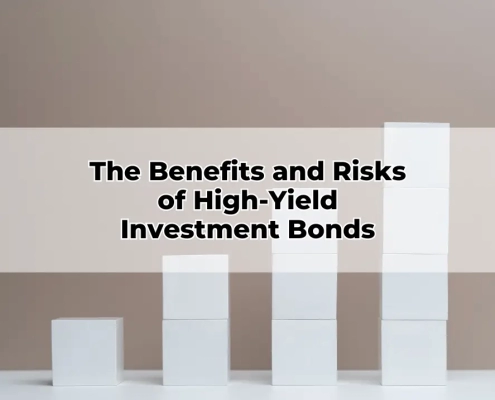
The Benefits and Risks of High-Yield Investment Bonds
High-yield investment bonds, often colloquially termed "junk bonds," occupy a unique niche in the financial landscape. Offering returns significantly higher than government bonds or investment-grade corporate debt, they are attractive to investors…

How to Use Your Superannuation to Fund a Business Startup
Australia's superannuation system is designed to provide financial stability in retirement. However, for those with entrepreneurial ambition and strategic foresight, super can also become a powerful funding mechanism for launching a business…
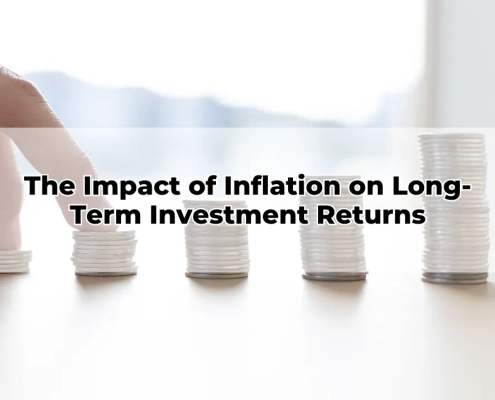
The Impact of Inflation on Long-Term Investment Returns
Inflation, often viewed as an economic inevitability, quietly eats away at purchasing power, slowly but surely undermining the value of money. For investors, especially those focused on long-term outcomes, inflation is not merely a macroeconomic…

How to Make the Most of Salary Sacrificing for Retirement Savings
In the ever-evolving world of retirement planning, salary sacrificing remains one of the most tax-effective and underutilised strategies available to Australian employees. When used intelligently, it offers a streamlined path to bolstering retirement…
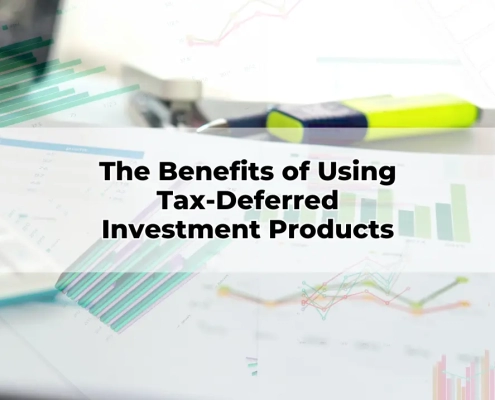
The Benefits of Using Tax-Deferred Investment Products
Tax-deferred investment products are an integral component of intelligent wealth-building strategies, particularly for individuals looking to accumulate wealth efficiently over time. Unlike traditional investment options where earnings are taxed…
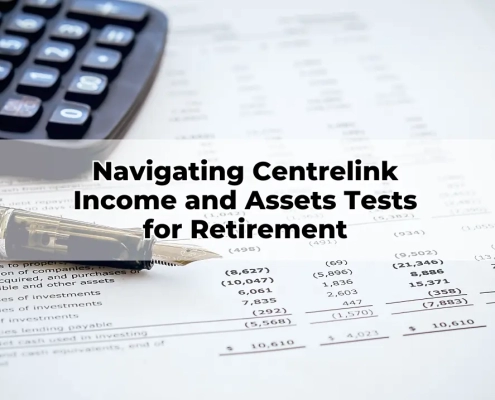
Navigating Centrelink Income and Assets Tests for Retirement
As Australians approach retirement, navigating Centrelink's complex income and assets tests becomes a vital part of securing financial wellbeing. These assessments determine eligibility for the Age Pension and other social security entitlements.…

How to Create a Retirement Plan as a Business Owner
Unlike salaried employees, business owners navigate a distinct retirement trajectory. The absence of employer-sponsored superannuation contributions, fluctuating income streams, and the tendency to reinvest profits back into the enterprise all…

How to Plan for Healthcare Costs in Retirement
Retirement in Australia brings with it the freedom of time but also the burden of escalating healthcare costs. Many retirees underestimate the financial demands of maintaining health and wellbeing in later years. As life expectancy increases,…

The Benefits of SMSF for Real Estate Investment
Self-Managed Super Funds (SMSFs) have become a compelling vehicle for wealth accumulation, particularly for those seeking to invest in real estate. With increased control, transparency, and potential tax advantages, SMSFs enable investors to…
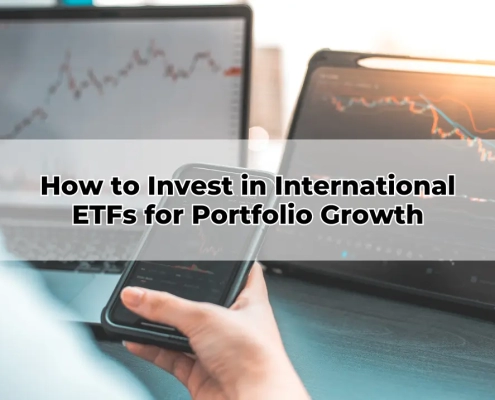
How to Invest in International ETFs for Portfolio Growth
International Exchange-Traded Funds (ETFs) are diversified investment vehicles that offer exposure to global markets without the complexity of directly purchasing foreign assets. These funds pool investor money and track international indices…

Superannuation Strategies for Late Starters
The path to retirement security often assumes a long runway of contributions, but not everyone begins early. Whether due to career breaks, life's unpredictability, or simply a late financial awakening, many Australians approach their 50s with…
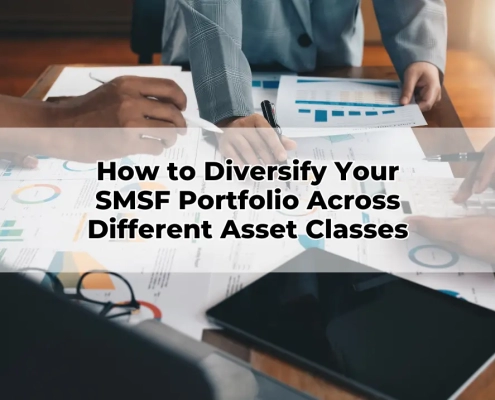
How to Diversify Your SMSF Portfolio Across Different Asset Classes
In the realm of self-managed superannuation funds (SMSFs), diversification is not a buzzword—it's a fundamental tenet of sound investing. As a Toowoomba Financial Adviser, I’ve observed that many trustees underestimate the significance…
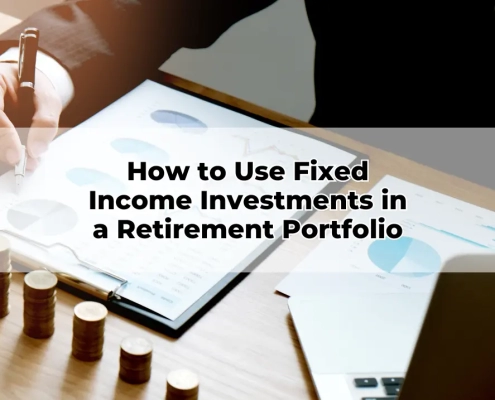
How to Use Fixed Income Investments in a Retirement Portfolio
Fixed income investments, in essence, are financial instruments that deliver predictable returns through interest or dividend payments. Typically, these include government bonds, corporate bonds, term deposits, and hybrid securities. Unlike…
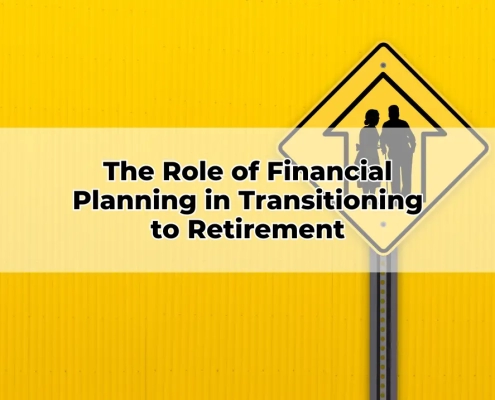
The Role of Financial Planning in Transitioning to Retirement
Transitioning into retirement is not a single event—it’s a meticulously staged financial evolution. This period, often regarded as a major life milestone, demands strategic foresight and refined planning. With Australia’s ageing population…

How to Protect Your Superannuation from Market Volatility
Market volatility refers to unpredictable fluctuations in investment markets, particularly share markets, which can have a significant effect on superannuation balances. Superannuation, being a long-term investment vehicle, is exposed to various…

Investing in Treasury Bonds: The Pros and Cons
Australian Treasury Bonds represent a fundamental pillar of the fixed-income investment landscape. Issued by the Commonwealth Government, these debt securities are considered among the most secure investment vehicles in the nation. They pay…

Impact of Rising Interest Rates on Your Investment Portfolio
Australia’s economic fabric is constantly shifting, with the Reserve Bank of Australia (RBA) using interest rate changes as a primary tool to control inflation and stimulate or cool the economy. In recent years, a sharp rise in interest rates…

How to Use Superannuation for Mortgage Reduction
In Australia, superannuation represents a formidable long-term asset. Simultaneously, for many Australians, the mortgage remains their most significant financial burden. Combining strategic thinking with legislative allowances, superannuation…

Financial Advice in Navigating the Family Home and Super
The family home often holds deep sentimental value. Beyond the emotional significance, however, lies a substantial financial asset—frequently the largest single component of personal wealth in Australia. Its dual role as both a shelter and…

How to Use Financial Modelling for Retirement Planning?
Retirement planning is no longer a vague aspiration tied to age. It's a complex, multifaceted financial exercise requiring precision, strategy, and foresight. Financial modelling brings clarity to this process, allowing individuals to visualise…

What is an Investment Bond and How Does it Work?
An investment bond, also referred to as an insurance bond or a tax-paid investment, is a long-term investment structure offered by life insurance companies. These financial instruments are essentially a blend of a managed fund and a life insurance…

How to Use an SMSF to Invest in Cryptocurrency
Self-managed superannuation funds (SMSFs) provide Australians with greater control over their retirement savings. As digital assets gain traction, many investors are exploring cryptocurrency as a viable addition to their SMSF portfolio. However,…

Ethical Investing: Aligning Your Portfolio With Your Values
Ethical investing has surged in popularity as investors seek to align their financial decisions with their personal values. Whether it's environmental sustainability, social responsibility, or corporate governance, investors are demanding more…

The Impact of Negative Gearing on Your Tax Obligations
Negative gearing is a widely used investment strategy in Australia, particularly within the property market. While it offers potential tax advantages, it also carries financial risks that require careful consideration. Understanding how negative…

How to Create a Budget to Maximise Your Retirement Savings
Effective budgeting is the cornerstone of a secure retirement. Whether you are just beginning your retirement planning journey or refining your financial strategy, a well-structured budget ensures you maximise your savings and maintain…

Tax Deductions for Investment Properties
Investing in property can be a lucrative strategy, but to maximise your returns, understanding the tax benefits is essential. The Australian Taxation Office (ATO) allows property investors to claim various deductions, reducing taxable…

How to Evaluate and Choose the Right Financial Adviser for You
A financial adviser serves as a strategic partner in your wealth-building journey, providing guidance on investments, retirement planning, tax strategies, and estate structuring. They tailor financial strategies to suit your goals and risk appetite,…

What You Need to Know About Australian Life Cycle Funds
Life cycle funds, also known as target-date funds, are a type of managed investment strategy designed to automatically adjust asset allocation as investors age. These funds are structured to balance growth and risk by shifting from aggressive…

Financial Strategies When Considering Downsizing
Downsizing is often viewed as a simple decision to relocate to a smaller residence. However, it is a multifaceted financial strategy with implications for retirement, superannuation, and estate planning. Australians considering downsizing should…

The Pros and Cons of Reverse Mortgages
A reverse mortgage is a financial product designed for Australians aged 60 and over, allowing homeowners to access equity tied up in their property without the need to sell. Unlike a traditional mortgage, no regular repayments are required,…

How to Protect Your Retirement Savings During Market Crashes
Market crashes are an inevitable part of financial cycles. These downturns,often triggered by economic instability, geopolitical events, or unforeseencrises, can erode wealth and destabilise investment portfolios. For retireesand those approaching…

The Benefits of Using an SMSF for Family Estate Planning
Estate planning is a fundamental aspect of financial management, ensuring that wealth is passed down efficiently and in alignment with one’s wishes. In Australia, Self-Managed Superannuation Funds (SMSFs) provide a compelling vehicle for intergenerational…

Direct Property Investment vs Property Syndicates
Property investment remains a cornerstone of wealth creation in Australia, yet the strategies available to investors vary significantly. Two prevalent options are direct property investment and property syndicates. Each offers unique benefits…
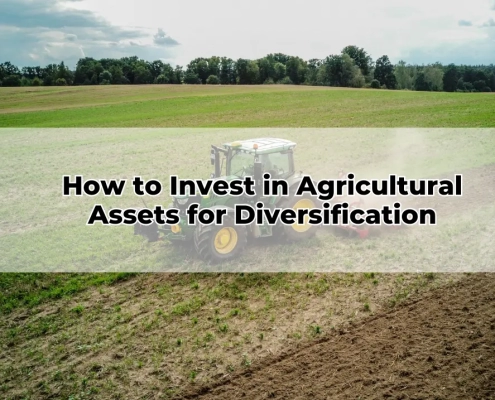
How to Invest in Agricultural Assets for Diversification
Agricultural investments have long been an overlooked asset class, yet they offer significant potential for diversification. With global demand for food increasing and farmland being a finite resource, investing in agriculture can provide stability,…
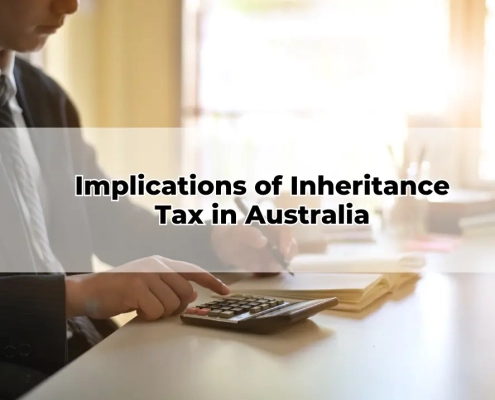
Implications of Inheritance Tax in Australia
Inheritance tax, commonly referred to as estate duty in some jurisdictions, is a levy imposed on the assets of a deceased individual before they are transferred to beneficiaries. While Australia does not currently impose a direct inheritance…

How to Plan for Aged Care Financial Needs
Aged care financial planning is a critical aspect of preparing for the later stages of life. The costs associated with aged care can be substantial, and without proper planning, individuals may face financial strain or limited care options.…

The Best Superannuation Funds for Ethical Investors
As ethical investing gains traction, Australians are increasingly looking for superannuation funds that align with their values. Ethical super funds invest in companies and industries that prioritise sustainability, social responsibility, and…

How to Leverage Trusts for Asset Protection and Tax Benefits
Trusts are a fundamental instrument in financial planning, offering both asset protection and tax efficiencies. They serve as a legal framework to hold and manage assets on behalf of beneficiaries, providing flexibility in wealth distribution…

The Growing Importance of Cybersecurity in Financial Planning
Cybersecurity has become an indispensable facet of modern financial planning. As digital transactions and online financial services become ubiquitous, the threat landscape expands, exposing individuals and businesses to sophisticated cyber threats.…

How to Maximise the Benefits of Your Salary Packaging Scheme
Salary packaging, also known as salary sacrificing, is a financial strategy that allows employees to receive part of their income in pre-tax benefits rather than cash. This can result in tax savings and increased take-home pay. By strategically…
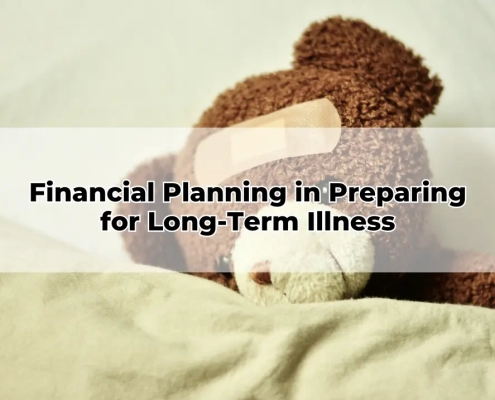
Financial Planning in Preparing for Long-Term Illness
Financial planning is an essential tool for securing one's future, especially when facing the possibility of long-term illness. A structured financial strategy ensures stability, mitigates stress, and preserves wealth. For individuals and families,…

Estate Planning for Blended Families
Estate planning is a fundamental aspect of financial management, ensuring that assets are distributed according to an individual’s wishes. For Australians with blended families, this process is significantly more complex. Without a carefully…

Superannuation in the Event of Relationship Breakdown
The dissolution of a relationship is a challenging and emotionally charged experience. Beyond the personal and emotional turmoil, there are significant financial implications, particularly concerning superannuation. As a long-term retirement…

How to Use Tax-Effective Investment Strategies in Your SMSF
Superannuation funds in Australia operate under a concessional tax regime, making them an attractive vehicle for wealth accumulation. Self-Managed Super Funds (SMSFs) offer even greater control over investment decisions, allowing trustees to…

Financial Planning for New Parents
Becoming a parent is an extraordinary milestone, one filled with excitement, joy, and newfound responsibilities. Among these responsibilities, financial security becomes paramount. Ensuring a stable financial future for your growing family requires…

How to Transition from Accumulation to Retirement with Super
Superannuation (super) follows a structured lifecycle: accumulation and retirement. During the accumulation phase, individuals grow their retirement savings through contributions and investment earnings. As retirement nears, a strategic transition…

Investing for Impact: Socially Responsible Investments
Socially responsible investing (SRI) has gained significant traction in recent years, as investors seek to align their financial goals with their ethical values. The growing awareness of environmental, social, and governance (ESG) issues has…

How to Use Superannuation to Fund University Education
Superannuation is a cornerstone of financial security in Australia, designed primarily for retirement savings. However, its flexibility and long-term growth potential make it an attractive avenue for funding various life goals, including university…

The Pros and Cons of Salary Sacrificing for High-Income Earners
Salary sacrificing is a strategic financial arrangement where an employee voluntarily redirects a portion of their pre-tax salary into specific benefits, typically superannuation. This approach can be particularly advantageous for high-income…

The Benefits of a Buy-Sell Agreement in Business Succession
Business succession planning is an essential strategy for ensuring the smooth transition of ownership when a key stakeholder exits the business. Without a well-structured plan, businesses face uncertainty, disputes, and financial instability.…

The Importance of Reviewing Life Insurance Needs in Retirement
Life insurance serves as a financial safeguard, offering security to loved ones in the event of an unforeseen passing. However, as retirement approaches, priorities shift, and the necessity of maintaining or adjusting life insurance policies…

How to Use Super Contributions to Enhance Retirement Income
Planning for retirement is a complex yet essential financial endeavour. One of the most effective ways Australians can build long-term wealth and secure a comfortable retirement is by strategically using superannuation contributions. Superannuation…

When Should You Consider Adding Private Equity to your Portfolio?
Private equity is often associated with institutional investors and high-net-worth individuals, but it is increasingly accessible to sophisticated retail investors. This alternative asset class can provide unique opportunities for wealth creation,…

How to Avoid Common Mistakes with Margin Lending
Margin lending can be a powerful strategy for wealth accumulation, but it comes with inherent risks. Many investors make costly errors that can erode capital and jeopardise financial security. By understanding these pitfalls and implementing…

The Convertible Bonds and Their Role in Diversification
In the ever-evolving financial landscape, investors constantly seek ways to balance risk and return. One often-overlooked instrument in portfolio construction is the convertible bond. These hybrid securities offer a unique blend of fixed-income…

The Role of Dollar-Cost Averaging in Volatile Markets
Dollar-cost averaging (DCA) is a disciplined investment strategy that involves investing a fixed amount of money into a particular asset at regular intervals, regardless of market fluctuations. This method contrasts with lump-sum investing,…
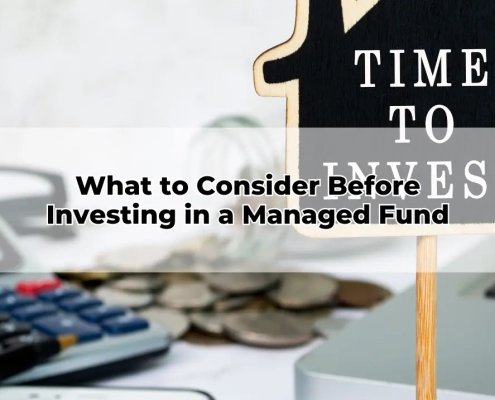
What to Consider Before Investing in a Managed Fund
Managed funds are investment vehicles where multiple investors pool their money to be managed by a professional fund manager. These funds offer diversification, professional oversight, and access to markets that may otherwise be challenging…
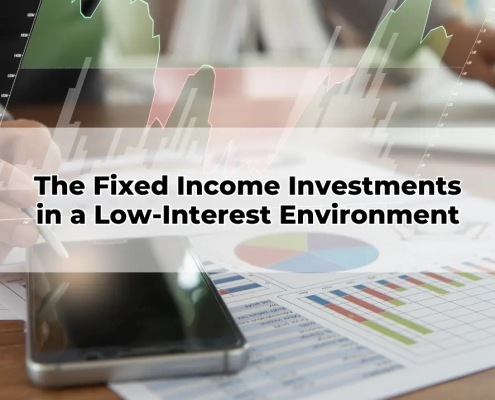
The Fixed Income Investments in a Low-Interest Environment
Fixed income investments have long been a cornerstone of a well-diversified portfolio, offering stability, predictable returns, and a safeguard against market volatility. However, in today’s low-interest-rate environment, these investments…

The Benefits of SMSFs for Small Business Owners
Small business owners in Australia face unique financial challenges and opportunities when planning for retirement. One of the most powerful tools available is a Self-Managed Super Fund (SMSF). SMSFs provide greater control, investment flexibility,…

How to Use a Reverse Mortgage as Part of Your Retirement Plan
A reverse mortgage is a financial product designed for homeowners, typically aged 60 and above, allowing them to access equity in their home without selling it. Unlike traditional loans, repayment is deferred until the borrower moves out, sells…

Why It’s Important to Review Your Investment Strategy Annually
Investing is not a static process; it is an evolving journey that requires periodic reassessment. An annual review ensures that your investments remain aligned with your financial goals and risk tolerance. Over time, changes in economic conditions,…

The Australian Residential Property Market Cycle
The Australian residential property market is dynamic, shaped by economic factors, government policies, and consumer sentiment. Understanding its cyclical nature is essential for investors, homeowners, and financial planners. The property market…
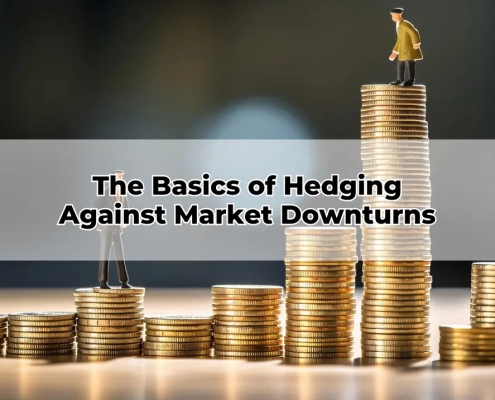
The Basics of Hedging Against Market Downturns
Market downturns are an inevitable aspect of investing. Economic cycles fluctuate due to various macroeconomic and geopolitical factors, leading to periods of market corrections or even recessions. These downturns can erode wealth if investors…

How to Incorporate International Bonds in Your Retirement Portfolio
International bonds serve as a crucial component in a well-diversified retirement portfolio, offering stability, income, and risk mitigation. As global economies fluctuate, exposure to international fixed-income assets helps counterbalance risks…

Financial Considerations for Couples with a Significant Age Gap
Couples with a substantial age difference often face unique financial challenges and opportunities. Planning ahead is crucial to ensure financial security, protect assets, and align long-term goals. A well-structured financial strategy can bridge…

The Role of Structured Products in a Conservative Investment Strategy
Structured products have emerged as an attractive investment vehicle, offering customisable risk-reward profiles for conservative investors. These financial instruments combine traditional assets, such as equities or bonds, with derivatives…

How to Diversify Your Superannuation Portfolio Beyond Traditional Investments
Diversification is a fundamental investment strategy designed to mitigate risk and enhance returns. Within the realm of superannuation, traditional portfolios often comprise equities, fixed interest, and cash. However, an overreliance on these…

What is a Non-Lapsing Death Benefit Nomination?
When planning for retirement and wealth distribution, one critical element often overlooked is the nomination of superannuation death benefits. Many Australians assume that their superannuation automatically forms part of their estate, but this…

How to Prepare Financially for Aging in Place
Aging in place—the ability to live independently in your own home as you grow older—is an aspiration for many Australians. However, ensuring financial security while maintaining independence requires careful planning. Without a structured…

The Benefits of Setting Up a Family Trust for Future Generations
A family trust is a powerful financial structure that provides wealth protection, tax advantages, and a framework for intergenerational wealth transfer. For every one looking to secure their family’s financial future, establishing a family…

Planning for Financial Security in the Event of Job Loss
The sudden loss of employment can be financially destabilising. Without a steady income, managing mortgage repayments, household expenses, and financial obligations becomes challenging. Many individuals underestimate the speed at which financial…

How to Use Hybrid Securities in Your Investment Portfolio
Hybrid securities are investment instruments that combine characteristics of both debt and equity, offering investors a blend of fixed income and potential capital appreciation. These financial products are commonly issued by banks and corporations,…

The Different Phases of Retirement and Investment Needs
Retirement is not a singular event but a series of evolving life stages, each with its own financial challenges and opportunities. To ensure a secure and fulfilling retirement, it is crucial to understand the distinct phases and align investment…
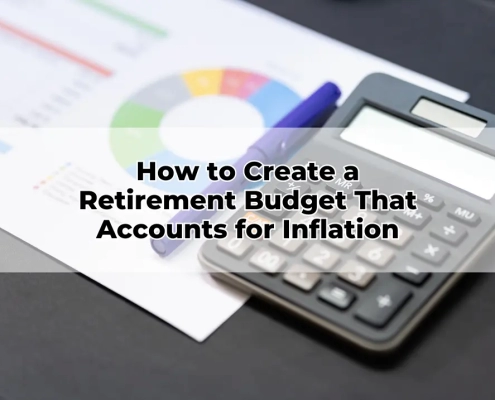
How to Create a Retirement Budget That Accounts for Inflation
Inflation steadily erodes the purchasing power of money over time. For retirees, this means that the cost of living will increase, even if their income remains the same. Failing to factor inflation into a retirement budget can lead to financial…

What You Need to Know About Investing in Australian Small-Cap Stocks
Small-cap stocks represent companies with a relatively small market capitalisation, typically ranging between $300 million and $2 billion. These stocks are often characterised by high growth potential, increased volatility, and the ability to…

The Role of Financial Planners in Estate Administration
Estate administration is the legal and financial process of managing a deceased person's assets, liabilities, and affairs. It involves the distribution of wealth, settlement of debts, and execution of the deceased’s wishes as outlined in their…

How to Effectively Use ETFs in a Balanced Portfolio
Exchange-Traded Funds (ETFs) have become a cornerstone of modern portfolio management, offering diversification, liquidity, and cost efficiency. Unlike traditional managed funds, ETFs trade on stock exchanges, providing investors with exposure…
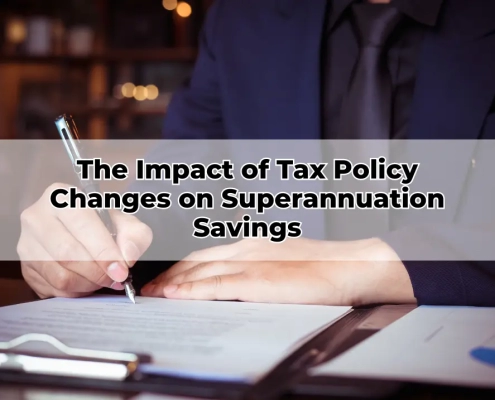
The Impact of Tax Policy Changes on Superannuation Savings
Superannuation is the cornerstone of retirement planning in Australia, providing individuals with financial security in their later years. However, frequent changes in tax policy can significantly affect superannuation savings, altering contribution…

How to Protect Your Investment Portfolio from Currency Fluctuations
Currency movements can have a profound impact on investment portfolios, particularly for those exposed to international markets. Exchange rates fluctuate due to factors such as interest rate differentials, economic performance, geopolitical…

Mistakes to Avoid When Planning for Early Retirement
Retiring early is an appealing goal for many individuals, offering the promise of more leisure, freedom, and time to enjoy life. However, the path to early retirement is not always smooth, and without proper financial planning, the dream of…

SMSF for Family-Owned Businesses
Establishing a Self-Managed Super Fund (SMSF) for a family-owned business can be an effective strategy to maximise retirement savings, consolidate wealth, and enhance financial flexibility. However, setting up an SMSF requires careful planning,…
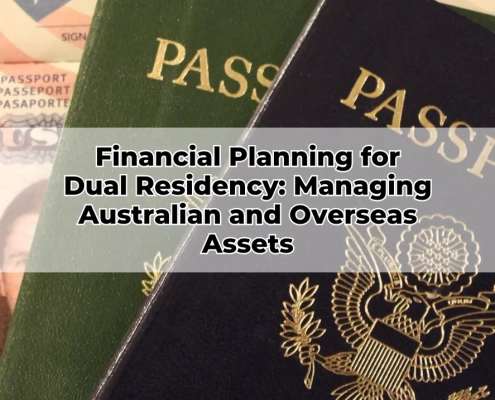
Financial Planning for Dual Residency: Managing Australian and Overseas Assets
Dual residency refers to a situation where an individual resides in two countries, either permanently or for extended periods. This status often arises due to work, family ties, or investment opportunities. For those managing assets across two…

Does Superannuation Contributions Affect Your Age Pension Eligibility?
Superannuation and the Age Pension are the twin pillars of Australia’s retirement income system. While superannuation provides self-funded retirement savings, the Age Pension acts as a safety net for those with insufficient resources. However,…

Superannuation and Pension Transfers from Overseas
Superannuation is a cornerstone of retirement planning in Australia, ensuring individuals accumulate sufficient wealth to support their post-work years. Many expatriates and migrants seek to transfer their overseas pensions into the Australian…
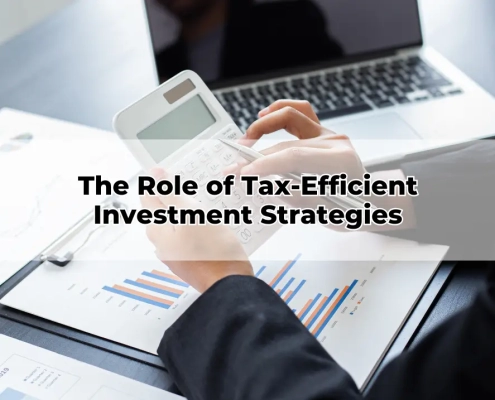
The Role of Tax-Efficient Investment Strategies
Tax-efficient investing is the practice of structuring investments to minimise tax liabilities and maximise after-tax returns. In Australia, where the tax system is intricate and multi-layered, investors must navigate capital gains tax (CGT),…
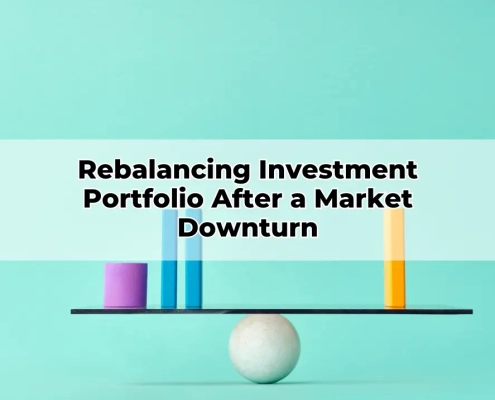
Rebalancing Investment Portfolio After a Market Downturn
Rebalancing an investment portfolio is a critical aspect of maintaining long-term financial stability. After a market downturn, assets may become misaligned with an investor’s original strategy. This process ensures that the portfolio reflects…

Understanding Australian REITs (Real Estate Investment Trusts)
Real Estate Investment Trusts (REITs) have become an increasingly popular investment vehicle. They offer investors exposure to the property market without the complexities of direct property ownership. With Australia’s robust property sector,…

Preparing for a Comfortable Retirement
Retirement is a significant milestone that requires meticulous financial preparation. With increasing life expectancy and evolving economic conditions, Australians must take a proactive approach to securing their financial future. The key to…

The Role of Term Life vs Whole Life in Estate Planning
Estate planning is a crucial aspect of financial management, ensuring that assets are efficiently transferred to beneficiaries while minimising taxation and legal complications. Among the tools used in estate planning, life insurance plays a…

How Australians Can Invest in Gold
Gold has been a sought-after asset for centuries, acting as a store of wealth and a hedge against economic volatility. In Australia, investors have several avenues to gain exposure to gold, each with its unique advantages and risks. Understanding…

Using Family Trusts for Wealth Transfer
Family trusts are a powerful vehicle for wealth transfer, providing flexibility, asset protection, and tax benefits. They allow families to manage and distribute wealth across generations while minimising risks and optimising financial outcomes.…

Financial Benefits of Living Wills and Advance Care Plans
Planning for the future is more than just managing investments and superannuation. One crucial but often overlooked aspect of financial planning is ensuring your healthcare and financial affairs are handled according to your wishes if you become…

How to Use Options to Hedge Investment Risks
Investment markets are inherently volatile. Whether it's economic uncertainty, inflation fluctuations, or unexpected geopolitical events, investors must navigate risks that can erode portfolio value. One of the most effective tools for mitigating…

Why Women Should Prioritise Retirement Planning Early
Women face distinct financial challenges that can significantly impact their retirement savings. Understanding these nuances is the first step towards achieving financial independence and security in later years.
Why Retirement Planning is Crucial…

Managing Financial Risks of a Blended Family Estate
When it comes to estate planning for blended families, the financial risks are significant but can be managed with foresight and strategy. As a Toowoomba Financial Adviser, I’ve worked with countless families navigating these complex dynamics.…

Why Financial Advisers Suggest Insurance Reviews Every Year
Regular insurance reviews are a cornerstone of sound financial planning. In a rapidly changing financial landscape, an annual check-up ensures that your policies align with your current circumstances and future aspirations. Without this crucial…

The Superannuation Guarantee for Casual Employees
Superannuation, commonly referred to as ‘super’, is a cornerstone of Australia’s retirement income system. The Superannuation Guarantee (SG) is a legislative requirement for employers to contribute a percentage of an eligible…
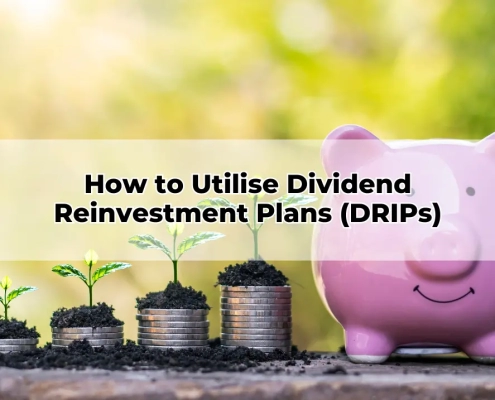
How to Utilise Dividend Reinvestment Plans (DRIPs)
Dividend Reinvestment Plans (DRIPs) are a powerful tool for wealth accumulation and financial growth. They enable investors to automatically reinvest cash dividends from shares into additional shares of the same company, fostering long-term…

How to Leverage the Super Downsizer Contribution
The Super Downsizer Contribution is an initiative by the Australian Government designed to assist older Australians in boosting their retirement savings. It allows eligible individuals to contribute proceeds from the sale of their primary residence…

Group Life Insurance through Superannuation
Group life insurance offered through superannuation funds provides Australians with a convenient and cost-effective way to access financial protection. This form of insurance is typically bundled with superannuation accounts and includes coverage…

How to Make Catch-Up Superannuation Contributions Work
Superannuation is a cornerstone of financial independence in retirement, yet many Australians fall behind on their contributions. Thankfully, recent changes to superannuation laws have created an opportunity for individuals to boost their retirement…
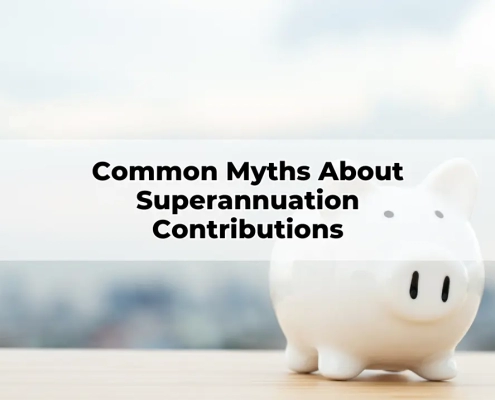
Common Myths About Superannuation Contributions
Superannuation contributions are a cornerstone of retirement planning in Australia. However, misconceptions about this critical aspect of financial planning often lead to confusion and missed opportunities. As Rob Laurie, a Master…
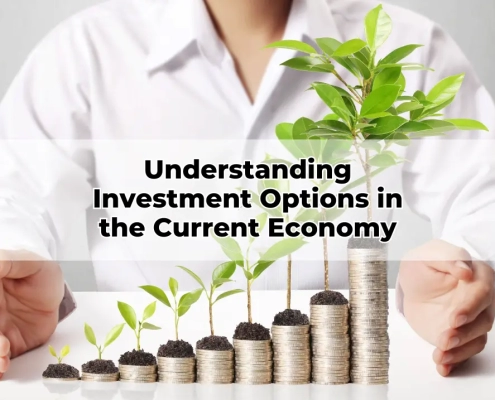
Understanding Investment Options in the Current Economy
In a rapidly evolving economic landscape, understanding investment options has never been more critical. Whether you’re planning for retirement, building wealth, or seeking financial security, knowing how to navigate the complexities of today’s…

The Role of Bonds in a Defensive Portfolio
A defensive portfolio is an investment strategy designed to minimise risk, especially during periods of market volatility. Unlike aggressive portfolios focused on capital growth, a defensive approach prioritises capital preservation and steady…

How to Incorporate Health Insurance in Financial Planning
Effective financial planning is about more than just growing wealth; it’s about protecting it. Health insurance plays a pivotal role in safeguarding your financial stability by mitigating unexpected medical expenses. As a Toowoomba Financial…

The Benefits of Salary Sacrificing to Superannuation
Salary sacrificing, also known as salary packaging, is a strategic approach that enables employees to allocate a portion of their pre-tax income towards certain benefits, including superannuation. This arrangement not only reduces taxable income…

Is Downsizing Worth It for Retirees?
Downsizing has become an increasingly popular option for Australian retirees seeking to simplify their lifestyle, reduce expenses, or free up capital. With its unique financial, emotional, and practical implications, it’s vital to assess whether…

How to Pass Down Wealth Efficiently to Your Heirs
Creating a plan to efficiently transfer wealth to your heirs is one of the most important steps in financial planning. With the right strategies in place, you can minimise tax implications, ensure your legacy is honoured, and provide for future…
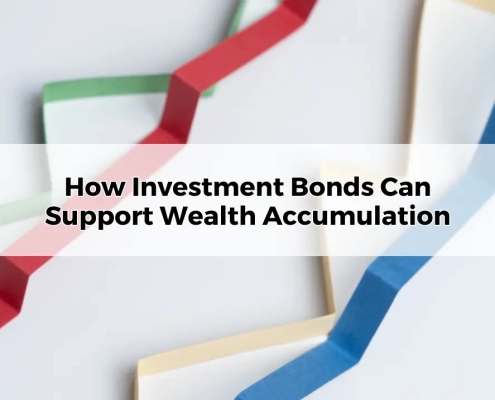
How Investment Bonds Can Support Wealth Accumulation
Investment bonds, often referred to as insurance bonds, are an overlooked yet powerful wealth accumulation tool. For Australians looking to build a secure financial future, understanding their unique benefits is essential. Combining investment…
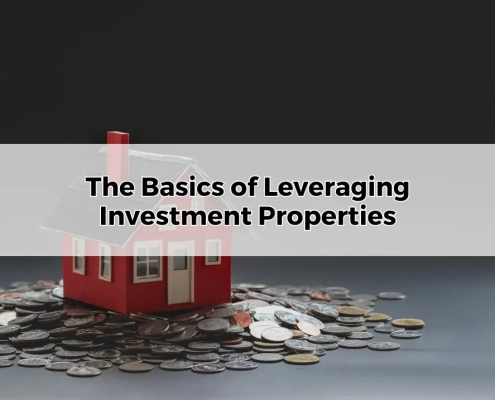
The Basics of Leveraging Investment Properties
Investing in property has long been a favoured strategy for Australians seeking to grow their wealth. By leveraging investment properties, you can amplify your financial potential and achieve your goals sooner. But what does leveraging entail,…
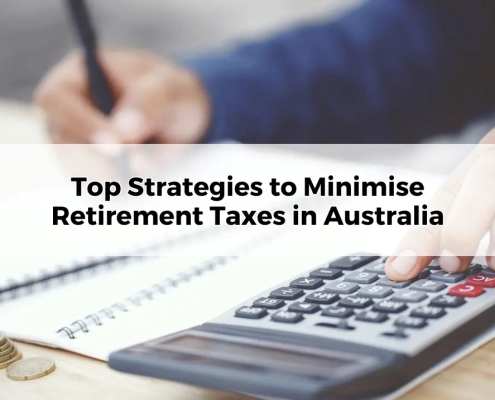
Top Strategies to Minimise Retirement Taxes in Australia
Retirement is a time to enjoy the fruits of your hard work. However, without careful planning, taxes can erode your savings. The Australian tax system can be complex, especially for retirees. Understanding its nuances is essential to preserving…

Understanding Your Rights in Insurance Claims
Navigating the insurance claims process can often feel daunting, especially when policyholders are unaware of their rights. In Australia, and particularly in Toowoomba, understanding these rights is essential to ensuring you receive…

Why Financial Advisers Recommend Diversified Investments
Diversification stands as a cornerstone of sound financial planning. This strategy mitigates risk while maximising returns, ensuring a balanced approach to wealth creation and preservation. It’s a vital component of any robust financial strategy,…
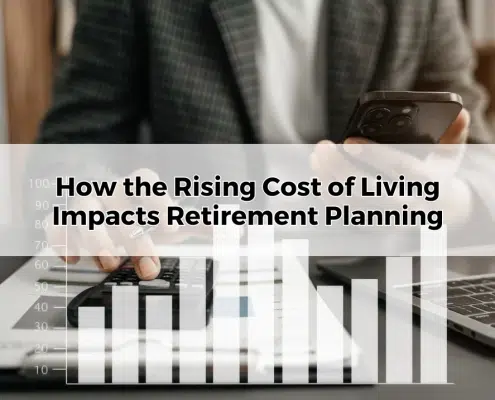
How the Rising Cost of Living Impacts Retirement Planning
The Rising Cost of Living and Retirement Planning
What Is the Rising Cost of Living?
The rising cost of living refers to the increasing amount of money required to maintain a standard quality of life over time. Factors such as inflation, supply…

Maximising Superannuation During Career Breaks
Career breaks can be an important part of life, whether they’re taken for family commitments, further education, or simply to recharge. However, they can also have a significant impact on your superannuation. A career break may disrupt your…

Strategies to Avoid Outliving Your Retirement Savings
Planning for retirement is one of the most critical financial steps in life. Without a proper strategy, there is a genuine risk of outliving your savings. As life expectancy increases, careful financial planning becomes imperative. Here are…
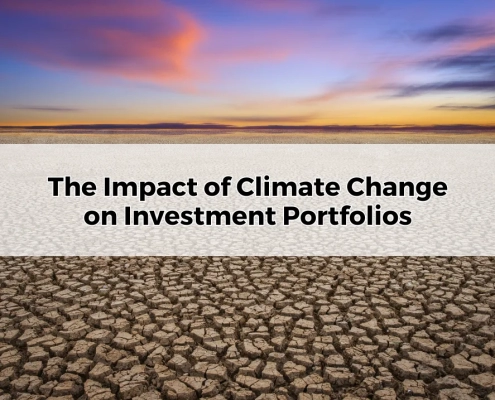
The Impact of Climate Change on Investment Portfolios
Climate change is no longer a distant environmental issue; it is a powerful force shaping global financial markets. Severe weather events, rising global temperatures, and shifting regulations are influencing economic landscapes worldwide. Investors…

How to Prepare for Long-Term Aged Care Costs
Planning for long-term aged care costs is a critical yet often overlooked aspect of financial management. As Australians enjoy longer life expectancies, the reality of requiring professional care at some stage of retirement becomes increasingly…
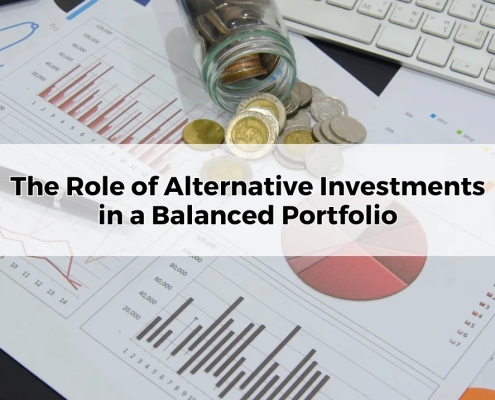
The Role of Alternative Investments in a Balanced Portfolio
Alternative investments are an increasingly popular asset class for those looking to diversify their portfolios beyond traditional stocks and bonds. These investments include tangible assets like real estate and commodities, as well as financial…

How to Budget and Save Effectively for Retirement
Retirement represents a significant life milestone, marking the transition from working life to a period of rest and personal fulfilment. However, achieving financial security during retirement requires deliberate planning and disciplined saving.…

The Benefits of Charitable Giving Through Estate Planning
Estate planning often centres on securing your family’s future, but it also presents a powerful opportunity to leave a lasting legacy. By incorporating charitable giving into your estate plan, you can support causes that matter deeply to you…


